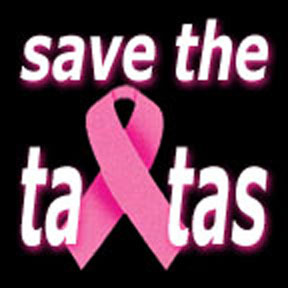Submitted by Anne Landman on
 Goldman Sachs, Halliburton, Monsanto, Blackwater, Bank of America, Citigroup, Cigna, Aetna, Enron, Arthur Andersen, Mercury Insurance, Philip Morris ...These are just a few corporate names that engender feelings of distrust, anger and betrayal. They represent scandals, greed, blatant disregard for public welfare, lavish spending of taxpayer money and other negatives, and serve as reminders about how corporate wrongdoing has brought shame on our country and harmed millions.
Goldman Sachs, Halliburton, Monsanto, Blackwater, Bank of America, Citigroup, Cigna, Aetna, Enron, Arthur Andersen, Mercury Insurance, Philip Morris ...These are just a few corporate names that engender feelings of distrust, anger and betrayal. They represent scandals, greed, blatant disregard for public welfare, lavish spending of taxpayer money and other negatives, and serve as reminders about how corporate wrongdoing has brought shame on our country and harmed millions.
But as the public grows more distrustful of big corporations, corporations are fighting back by evolving more clever and sophisticated forms of public relations. Their goal? To manipulate public attitudes and assure that widespread negative feelings don't block their ability to do business. Increasingly, corporations are engaging in variations on the theme of "corporate social responsibility," to try and persuade us that they can be trusted again.
Cause Marketing Takes Off
We got a warning about what's coming down the pike the other day when Advertising Age magazine published an article about an PR executive named Carol Cone. Most people outside PR circles have probably never heard of her. The article said that Cone is leaving her long-established, successful, eponymously-named ad agency, and is moving to the Edelman public relations firm, one of the biggest PR companies in the world. The headline said, "Carol Cone, Leader in Corporate Goodness, Joins Edelman."
"Corporate Goodness"?
 Cone is credited with being the inventive mind behind a PR strategy called "cause marketing," in which a corporation teams up with a reputable non-profit group to raise money for a popular cause. Corporations use cause marketing as a sales booster and an image-management tool (pdf). Perhaps the most prominent current example of cause marketing is the widespread "pinking" of breast cancer. A long list of corporations now sell pink products to promote breast cancer awareness, and send a portion of the proceeds to the Susan G. Komen Foundation. This massive pinking campaign has drawn criticism for going too far by leading companies to sell "pink" products that can actually harm people or degrade the environment, like guns, cars and water in plastic bottles containing bisphenol-A. This disappointing side of the breast cancer awareness campaign has even given rise to a new word: "pinkwashing", defined by the group Breast Cancer Action, as a term used critically of corporate campaigns and practices, in which the sponsoring companies position themselves as leaders in the effort to eradicate breast cancer while engaging in practices that may contribute to rising rates of the disease.
Cone is credited with being the inventive mind behind a PR strategy called "cause marketing," in which a corporation teams up with a reputable non-profit group to raise money for a popular cause. Corporations use cause marketing as a sales booster and an image-management tool (pdf). Perhaps the most prominent current example of cause marketing is the widespread "pinking" of breast cancer. A long list of corporations now sell pink products to promote breast cancer awareness, and send a portion of the proceeds to the Susan G. Komen Foundation. This massive pinking campaign has drawn criticism for going too far by leading companies to sell "pink" products that can actually harm people or degrade the environment, like guns, cars and water in plastic bottles containing bisphenol-A. This disappointing side of the breast cancer awareness campaign has even given rise to a new word: "pinkwashing", defined by the group Breast Cancer Action, as a term used critically of corporate campaigns and practices, in which the sponsoring companies position themselves as leaders in the effort to eradicate breast cancer while engaging in practices that may contribute to rising rates of the disease.
Authentic Diseases, but often Disingenuous Marketing Ploys
Cone was the creative mind behind the "Go Red for Women" campaign, in which the Rite Aid drug store chain teamed up with the American Heart Association (AHA), nominally to raise awareness of heart disease in women. Rite Aid availed its customers of the opportunity to buy little red paper dresses for a dollar each, with the proceeds going to AHA. (Saving female anatomical parts seems to engender special enthusiasm, as evidenced by crass new bumper stickers that urge people to "Save the Ta Tas.")
Overlooked in the "Go Red for Women" campaign was one giant, glaring, disingenuous flaw: it allowed the Rite Aid drug store chain to claim that they cared about women's cardiac health while openly continuing to profit from selling the biggest cause of heart disease in women: cigarettes. Astonishingly, a Rite Aid press release about its sponsorship of the Go Red campaign listed many heart health tips for women, but failed completely to even mention that quitting smoking can markedly reduce a woman's chances of heart disease. Rite Aid was of course completely aware that it was selling a product that causes diseases in women and everyone else, since the company signed contracts with R.J. Reynolds, Brown & Williamson and other tobacco companies indemnifying the chain (protecting it) against legal claims of harm arising from its cigarette sales.
Cone's Take on Cause Marketing
In a November, 2009 New York Times article, Cone pointed out that cause marketing is growing because consumers can tune out the deluge of traditional ads that bombard them every day. According to Cone, this means marketers should no longer market to people. Instead, she advises, they need to entice people through storytelling, and "what better story to tell than one of benefiting a charity or worthwhile cause, providing that 'it's a real story ... something authentic that makes sense.''
Dressing Up Corporations
 Engaging in cause marketing helps a corporation put on a "good citizen suit" by allowing it to associate with a reputable non-profit organization. This lends the corporation a patina of caring and social responsibility. A reputable nonprofit's hard-earned good reputation has a "coat-tail effect," sweeping feelings of respectability towards the participating corporation. This gives people -- and legislators -- a better feeling about doing business with the corporation, and helps even questionable companies remain in the business mainstream.
Engaging in cause marketing helps a corporation put on a "good citizen suit" by allowing it to associate with a reputable non-profit organization. This lends the corporation a patina of caring and social responsibility. A reputable nonprofit's hard-earned good reputation has a "coat-tail effect," sweeping feelings of respectability towards the participating corporation. This gives people -- and legislators -- a better feeling about doing business with the corporation, and helps even questionable companies remain in the business mainstream.
Richard Edelman of the Edelman PR agency told Ad Age that the loss of trust by consumers in companies creates "an opportunity for PR shops to grab more marketing responsibility from other marketing service sectors." Translated, this means that as traditional advertising loses the ability to persuade, corporations are increasingly turning to PR to implement "social responsibility" programs that pinkwash, greenwash, greedwash and use other, more sophisticated strategies to buddy up to good causes and burnish corporate reputations, or, in the case of a corporation that hasn't yet done huge harm, to create a buffer against a potential eventual public backlash.
In effect, the PR business is setting itself up to leverage and capitalize on consumers' growing lack of trust in business. It's pretty twisted.
Maybe We're Jaded ...
It's our job to examine PR ploys and expose manipulative schemes and plots. We're not alone in recognizing that corporations use "cause marketing" as a tool to palliate image threats, influence public policy and guarantee wealthy, often harmful corporations keep a seat at the policymaking table by allowing them to look like responsible actors. But we want to be fair.
Not all corporate social responsibility efforts are necessarily bad. But real corporate social responsibility should start at home. Before a company takes up with a non-profit group, gives to a cause, pinks its products or funds a foundation and then advertises all of this wonderful largesse, it should first behave responsibly toward society. It should pay a living wage, treat its employees fairly, offer adequate benefits and provide its workers with a safe and healthy workplace. It should not engage in fraudulent activity, bully or intimidate public officials either above or below board, co-opt political processes, or harm the environment. If it does all this and then still wants to contribute by helping or giving to causes, that's great, but it would be nice if they tried not to blow their horn too loud about it.
Ask Questions, Get Answers
 Until the day corporations truly become socially responsible and trustworthy, though, we at PRWatch.org will continue to urge readers to be skeptical about PR schemes like cause marketing, strategic corporate philanthropy and other thinly-veiled, often manipulative PR efforts.
Until the day corporations truly become socially responsible and trustworthy, though, we at PRWatch.org will continue to urge readers to be skeptical about PR schemes like cause marketing, strategic corporate philanthropy and other thinly-veiled, often manipulative PR efforts.
When you detect a cause marketing campaign, start asking questions, like how much of a product's purchase price is really going to the cause at hand. Ask yourself whether you are buying a product because you want it or need it, or because a feel-good marketing campaign used cute colored ribbons or other props to bring it to your attention? If you really want to support a cause, ask yourself if could you do even more good if you gave your money directly to the cause, rather than "giving" by buying a product?
We hope these questions, and our take on cause marketing, will help people weed out corporate image management schemes from the truly worthwhile and better ways that exist to help good causes.

Comments
Daniel Villarreal replied on Permalink
Excellent!
waterflaws in Denver replied on Permalink
cleaning vs laundering
cherilyn naughton replied on Permalink
Monsanto on NPR
waterflaws in Denver replied on Permalink
NPR
Carol Cone replied on Permalink
Cause Marketing Takes Off
BCAction replied on Permalink
What the Cluck? Tell KFC and
Deborah Lillis replied on Permalink
Corporate Marketing & Corporate Responsibility